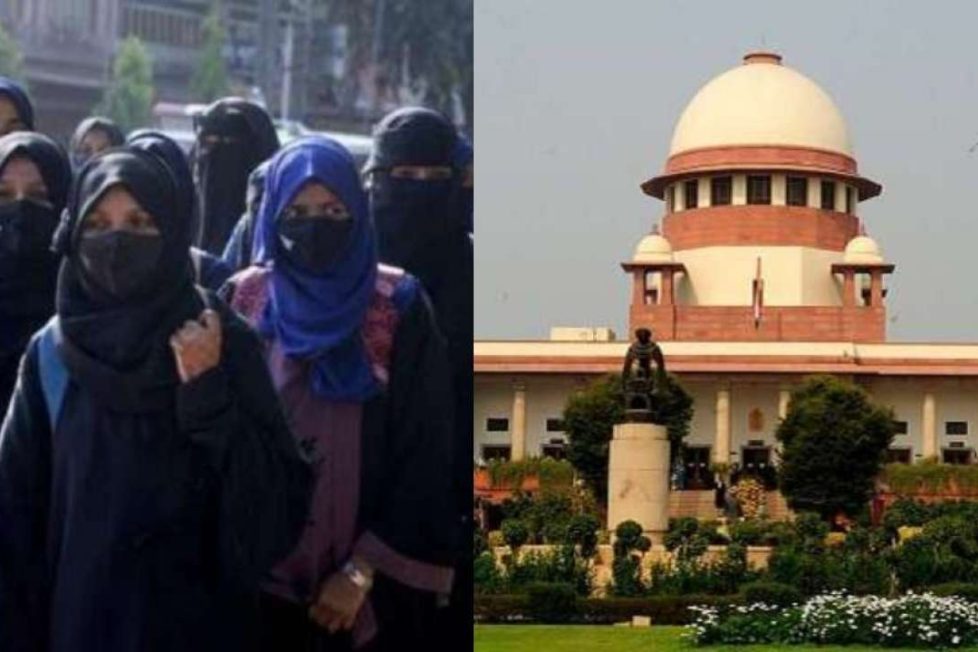SC: Years without a hijab demand, PFI movement a part of a wider plot.


The Karnataka government informed the Supreme Court on Tuesday that the events that took place in the state prior to some college development committees banning the hijab in their respective educational institutions were not “spontaneous” but rather “part of a larger conspiracy,” pointing out that “women are revolting” against the hijab even in constitutionally Islamic nations like Iran.
In his appearance on behalf of the State, Solicitor General Tushar Mehta refuted claims that the ban was intended to target the minority population and claimed that the State was compelled to act owing to the circumstances that had arisen.
“Far-fetched claims that the government is stifling the voice of minorities (were) voiced. No. Because of the circumstances, the government had to intervene, he said the justices Hemant Gupta and Sudhanshu Dhulia’s bench.
Mehta described the sequence of events for the court, stating that “at least from 2013, nobody was deviating from the prescribed uniform, which did not include the hijab.”
He claimed that neither wearing a hijab nor wearing a saffron shawl was required. “In 2022, a group named the Popular Front of India started a movement on social media. The FIR filed later claimed that the movement was intended to stir up a form of unrest based on people’s religious sentiments, and as part of that, there were ongoing social media calls to “start wearing hijab.”
Mehta claimed that this wasn’t just a few kids acting on their own; rather, it was a broader conspiracy, and the kids were following instructions. He claimed that the State has provided the High Court with pertinent information in this regard.
“We emphasized that the children’s unexpected uptick is not the result of their own original thinking. There was no issue because, according to HC, no one had worn a hijab since at least 2004. He told the court, “All of a sudden, there was a ruckus, and it resulted in some kids and parents demanding the right to wear it in classes.
Mehta claimed that several students petitioned the HC before the state legislature had made a choice. The petitioner-student who claimed she had to abruptly quit wearing a hijab was mentioned by the court. It was referred to by Mehta as an “unsubstantiated claim”.
Mehta claimed that because public order was going to be violated, the government had to step in. He said that the government would have been in violation of the constitution if it had not behaved in the manner it did.
The government order issued on February 5, 2022, “was necessary for more than one reasonable cause. This is not a directive that forbids pupils from a specific group from donning a particular article of clothing. The threshold is greater for (it to be declared) an essential (religious practice),” he said. And you will need to plead when you exercise that right and try to stop the government from acting within its legal authority and the school from upholding its obligation to treat everyone equally. not that it is acceptable in religion, but rather that it is so compelling that you cannot live without it.
He emphasized that because the petitioners had filed a court motion alleging a violation of such rights, the HC had looked into the issue of fundamental religious practice. “Therefore the court laid down this test. Does it exist from time immemorial? I take it that the Holy Quran mentions it. Is it so compelling? (If so) have you given any evidence…have you given any pleading that in every country where this particular religion is followed, 95 percent of the women are wearing hijab?”
Mehta, while pointing out that India is a secular nation, said “As a matter of fact, where nations are by their constitution Islamic, like Iran, women are not wearing hijab. They are fighting against the hijab. They are revolting against the hijab.”
SG stated, “If my interpretation of a particular holy book is taken to be the sole basis of deciding whether it is essential for me or not, there may be many things in there that may be prohibited in law.”
The court emphasized that it had been informed that according to Muslim law, women cannot leave the house unaccompanied and must be accompanied by a man.
Mehta responded to a question from the bench by saying that the HC would have been wise to avoid addressing the issue of fundamental religious practice, but the petitioners had brought it up. He claimed that if the HC had not addressed it, accusations would have been made.
Justice Dhulia stated, “Not only could it have been avoided, but another thing which is very apparent in the judgment is, when judges are coming to a conclusion, whether something is an essential religious practice, they…rely upon commentaries. And then they say it’s authentic…. Second, when the other side gives them another commentary, it is said that there is nothing authentic…”
Mehta replied, “That’s exactly where the problem lies. One thing can have five different commentaries, giving five different perceptions.”
Mehta called the appellants’ claim that all religious activities, not just fundamental ones, are protected by the constitution “constitutionally flawed.” “SC decisions never intended that whatever you claim is my religious practice is protected,” he remarked. The situation would then become chaotic. The Constitution would have never allowed for it.
Prior to the start of the academic session, the state government had said in a circular that uniforms are not required, according to senior attorney Dushyant Dave, who was representing the appellants. He added that women’s hijabs “add to their dignity.” “When a woman wears a hijab, it makes her more dignified, just like when a Hindu woman covers her head with a sari,”
DISCLAIMER: The author is solely responsible for the views expressed in this article. The author carries the responsibility for citing and/or licensing of images utilized within the text.
